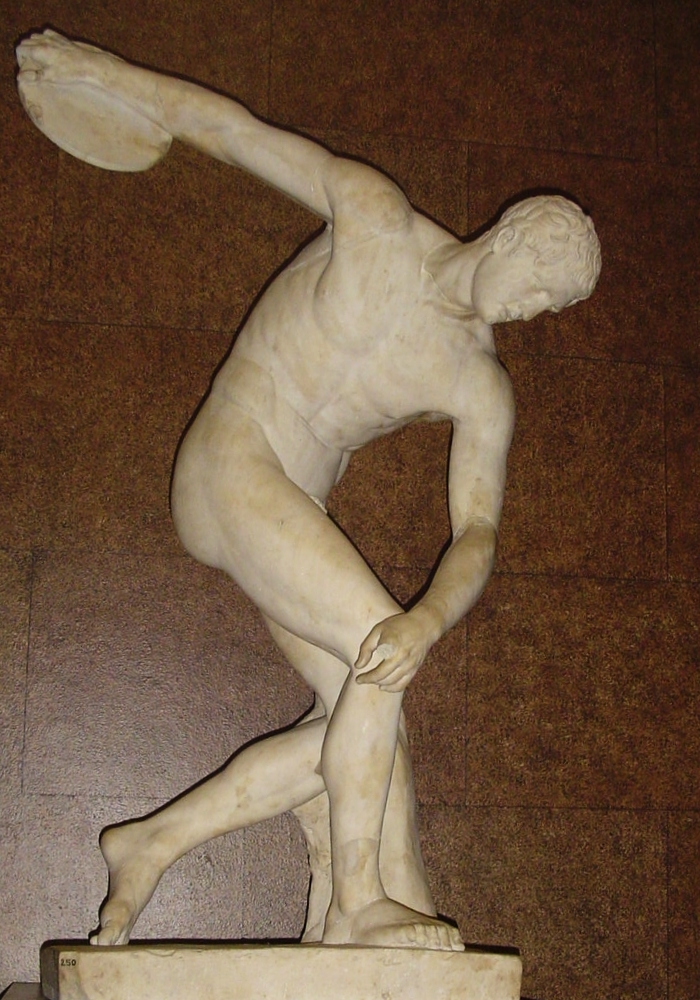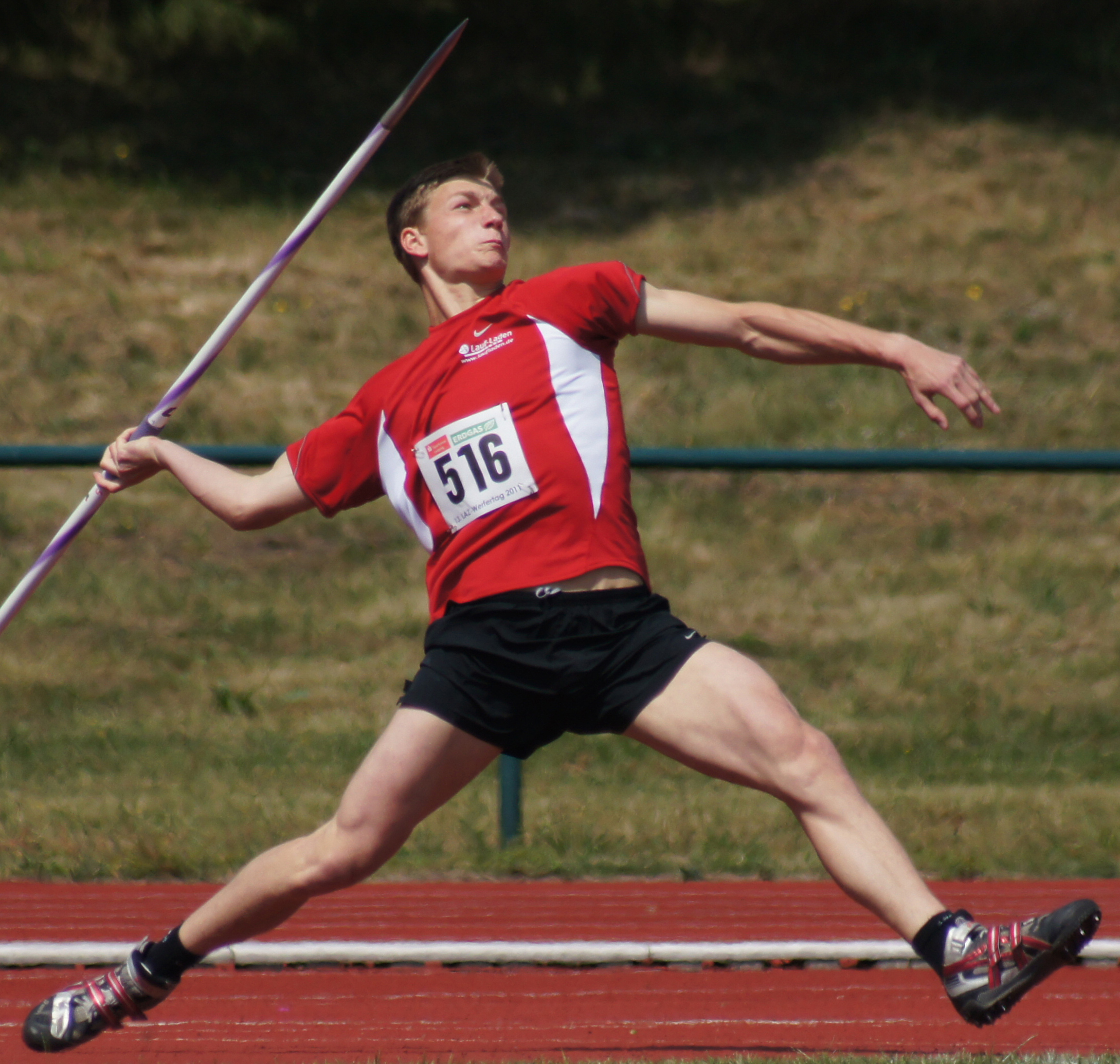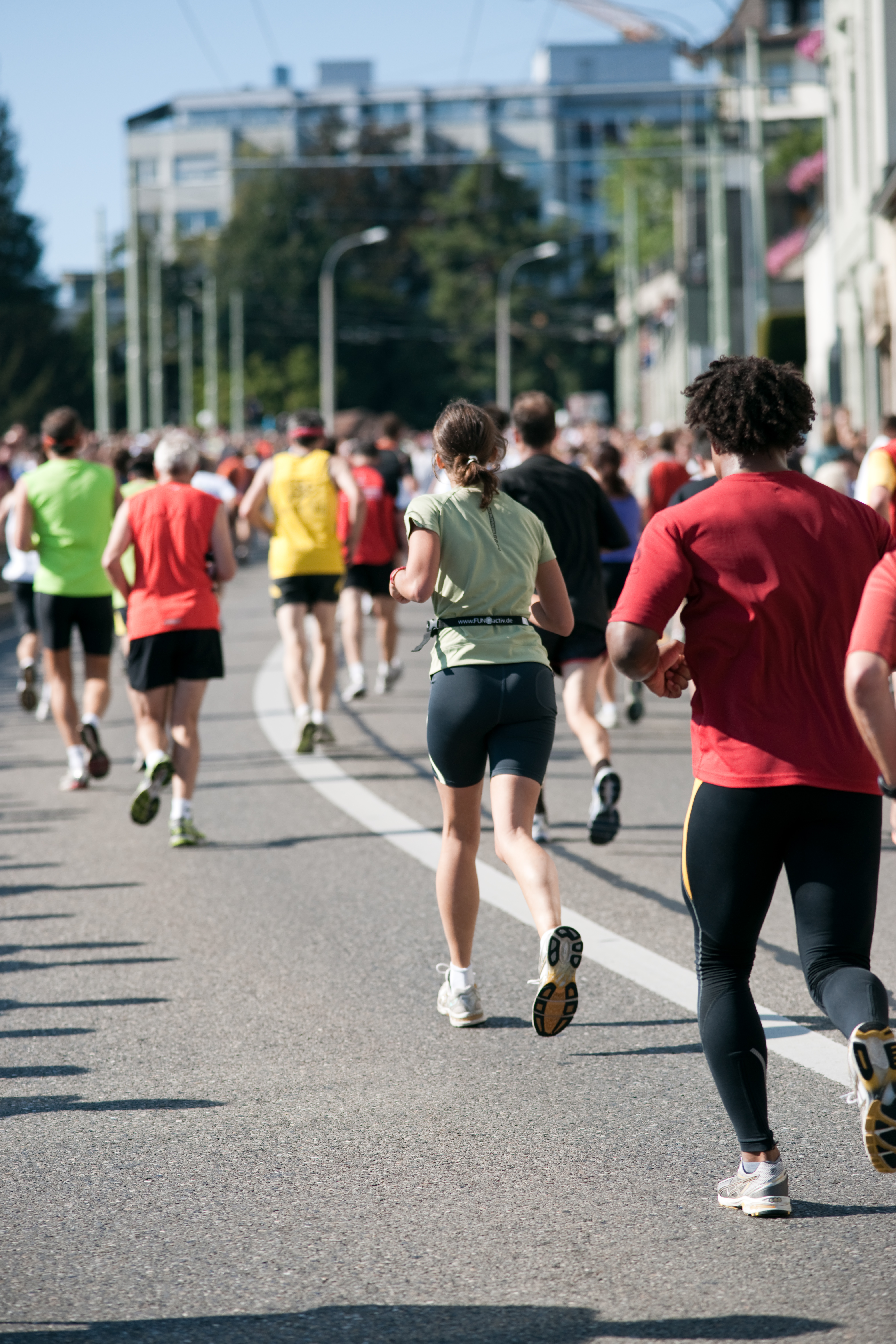|
2003 European Athletics Junior Championships
The 2003 European Athletics Junior Championships was held in Tampere, Finland from 23 to 27 July 2003. A total of 44 events were contested; 22 by men and 22 by women. Germany had the biggest medal haul with nine golds and a total of 26, closely followed by Russia (also 9 golds but 24 medals in total). Great Britain was third with 17 medals, while Romania was fourth with ten medals. Four championship records were set at the competition, although three were as a result of using lighter implements in the men's throwing events.European Junior Championships (Men) GBR Athletics. Retrieved on 2010-06-04. 
|
Tampere
Tampere ( , , ; sv, Tammerfors, ) is a city in the Pirkanmaa region, located in the western part of Finland. Tampere is the most populous inland city in the Nordic countries. It has a population of 244,029; the urban area has a population of 341,696; and the metropolitan area, also known as the Tampere sub-region, has a population of 393,941 in an area of . Tampere is the second-largest urban area and third most-populous individual municipality in Finland, after the cities of Helsinki and Espoo, and the most populous Finnish city outside the Greater Helsinki area. Today, Tampere is one of the major urban, economic, and cultural hubs in the whole inland region. Tampere and its environs belong to the historical province of Satakunta. The area belonged to the Häme Province from 1831 to 1997, and over time it has often been considered to belong to Tavastia as a province. For example, in '' Uusi tietosanakirja'' published in the 1960s, the Tampere sub-region is presented as p ... [...More Info...] [...Related Items...] OR: [Wikipedia] [Google] [Baidu] |
100 Metres
The 100 metres, or 100-meter dash, is a sprint race in track and field competitions. The shortest common outdoor running distance, the dash is one of the most popular and prestigious events in the sport of athletics. It has been contested at the Summer Olympics since 1896 for men and since 1928 for women. The inaugural World Championships were in 1983. The reigning 100 m Olympic or world champion is often named "the fastest man or woman in the world". Fred Kerley and Shelly-Ann Fraser-Pryce are the reigning world champions; Marcell Jacobs and Elaine Thompson-Herah are the men's and women's Olympic champions. On an outdoor 400-metre running track, the 100 m is held on the home straight, with the start usually being set on an extension to make it a straight-line race. There are three instructions given to the runners immediately before and at the beginning of the race: "on your marks," "set," and the firing of the starter's pistol. The runners move to the star ... [...More Info...] [...Related Items...] OR: [Wikipedia] [Google] [Baidu] |
Tero Järvenpää
Tero Mikael Järvenpää (born 2 October 1984 in Tampere) is a Finnish javelin thrower. He represents Tampereen Pyrintö on club-level and his coach is his father Pentti Järvenpää. His personal best throw is 86.68 metres, achieved in July 2008 in Tampere Tampere ( , , ; sv, Tammerfors, ) is a city in the Pirkanmaa region, located in the western part of Finland. Tampere is the most populous inland city in the Nordic countries. It has a population of 244,029; the urban area has a population o .... Seasonal bests by year *2003 - 80.45 *2004 - 80.13 *2005 - 84.05 *2006 - 84.95 *2007 - 84.35 *2008 - 86.68 *2009 - 82.65 *2010 - 83.81 *2011 - 80.10 Achievements References * 1984 births Living people Sportspeople from Tampere Finnish male javelin throwers Athletes (track and field) at the 2008 Summer Olympics Olympic athletes of Finland Universiade medalists in athletics (track and field) Universiade silver medalists for Finland Medalists at the 2005 Summer Uni ... [...More Info...] [...Related Items...] OR: [Wikipedia] [Google] [Baidu] |
Teemu Wirkkala
Teemu Sakari Wirkkala (born January 14, 1984, in Kokkola) is a Finnish javelin thrower. His personal best throw is 87.23 metres, achieved in July 2009 in Joensuu Joensuu (; krl, Jovensuu; ) is a city and municipality in North Karelia, Finland, located on the northern shore of Lake Pyhäselkä (northern part of Lake Saimaa) at the mouth of the Pielinen River (''Pielisjoki''). It was founded in 1848. The .... Achievements Seasonal bests by year * 2000 – 68.21 * 2001 – 69.22 * 2002 – 74.56 * 2003 – 80.57 * 2004 – 80.97 * 2005 – 80.68 * 2006 – 82.82 * 2007 – 84.06 * 2008 – 84.10 * 2009 – 87.23 * 2010 – 86.53 * 2011 – 82.39 * 2012 – 83.73 * 2013 – 82.91 * 2014 – 77.45 * 2015 – 84.39 References * 1984 births Living people People from Kokkola Finnish male javelin throwers Athletes (track and field) at the 2008 Summer Olympics Olympic athletes of Finland Sportspeople from Central Ostrobothnia 20th-century Finnish people 21st-century F ... [...More Info...] [...Related Items...] OR: [Wikipedia] [Google] [Baidu] |
Athletics (sport)
Athletics is a group of sporting events that involves competitive running, jumping, throwing, and walking. The most common types of athletics competitions are track and field, road running, cross country running, and racewalking. The results of racing events are decided by finishing position (or time, where measured), while the jumps and throws are won by the athlete that achieves the highest or furthest measurement from a series of attempts. The simplicity of the competitions, and the lack of a need for expensive equipment, makes athletics one of the most common types of sports in the world. Athletics is mostly an individual sport, with the exception of relay races and competitions which combine athletes' performances for a team score, such as cross country. Organized athletics are traced back to the Ancient Olympic Games from 776 BC. The rules and format of the modern events in athletics were defined in Western Europe and North America in the 19th and early 20th century, an ... [...More Info...] [...Related Items...] OR: [Wikipedia] [Google] [Baidu] |
Javelin Throw
The javelin throw is a track and field event where the javelin, a spear about in length, is thrown. The javelin thrower gains momentum by running within a predetermined area. Javelin throwing is an event of both the men's decathlon and the women's heptathlon. History The javelin throw was added to the Ancient Olympic Games as part of the pentathlon in 708 BC. It included two events, one for distance and the other for accuracy in hitting a target. The javelin was thrown with the aid of a thong ('' ankyle'' in Greek) that was wound around the middle of the shaft. Athletes held the javelin by the ''ankyle'', and when they released the shaft, the unwinding of the thong gave the javelin a spiral trajectory. Throwing javelin-like poles into targets was revived in Germany and Sweden in the early 1870s. In Sweden, these poles developed into the modern javelin, and throwing them for distance became a common event there and in Finland in the 1880s. The rules continued to ... [...More Info...] [...Related Items...] OR: [Wikipedia] [Google] [Baidu] |
European Athletics
The European Athletic Association (more commonly known as European Athletics) is the governing body for athletics in Europe. It is one of the six Area Associations of the world's athletics governing body World Athletics. European Athletics has 51 members and is headquartered in Lausanne. Originally created in 1932 as a European Committee, it was made into an independent body during the Bucharest conference of 1969. The first European Athletics congress took place in Paris on 6–8 October 1970, with Dutchman Adriaan Paulen elected as its first president. From a volunteer-led organization based in the acting Secretary's home country, European Athletics has developed into a professional organization with a permanent base in Switzerland. European Athletics runs and regulates several championships and meetings across Europe – both indoor and outdoor. History After the foundation of the International Association of Athletic Federations (IAAF) in 1912, it was clear there needed to ... [...More Info...] [...Related Items...] OR: [Wikipedia] [Google] [Baidu] |
Silver Medal
A silver medal in sports and other similar areas involving competition is a medal made of, or plated with, silver awarded to the second-place finisher, or runner-up, of contests or competitions such as the Olympic Games, Commonwealth Games, etc. The outright winner receives a gold medal and the third place a bronze medal. More generally, silver is traditionally a metal sometimes used for all types of high-quality medals, including artistic ones. Sports Olympic Games During the first Olympic event in 1896, number one achievers or winners' medals were in fact made of silver metal. The custom of gold-silver- bronze for the first three places dates from the 1904 games and has been copied for many other sporting events. Minting the medals is the responsibility of the host city. From 1928 to 1968 the design was always the same: the obverse showed a generic design by Florentine artist Giuseppe Cassioli with text giving the host city; the reverse showed another generic design ... [...More Info...] [...Related Items...] OR: [Wikipedia] [Google] [Baidu] |
Marius Ionescu
Marius Viorel Ionescu (born December 18, 1984) is a Romanian long-distance runner. Biography At the2012 Summer Olympics
The 2012 Summer Olympics (officially the Games of the XXX Olympiad and also known as London 2012) was an international multi-sport event held from 27 July to 12 August 2012 in London, England, United Kingdom. The first event, the ... , he competed in the Men's marathon, finishing in 26th place.
Achievement ...
|
Inna Poluškina
Inna Poluškina (born 7 July 1984, in Riga) is a Latvian long-distance runner who specialises in the 3000 metres. Biography Poluškina has won championships in the 1500 m, 3000 m, 5000 m, 10,000 m and half marathon A half marathon is a road running event of —half the distance of a marathon. It is common for a half marathon event to be held concurrently with a marathon or a 5K race, using almost the same course with a late start, an early finish or shortcu ... categories. In 2008, she set Latvian record in 3000 m steeplechase and did Olympic B normative. Achievements Personal bests External links * {{DEFAULTSORT:Poluskina, Inna 1984 births Living people Latvian female middle-distance runners Latvian female long-distance runners Latvian female steeplechase runners Athletes from Riga Athletes (track and field) at the 2008 Summer Olympics Olympic athletes of Latvia ... [...More Info...] [...Related Items...] OR: [Wikipedia] [Google] [Baidu] |
Long-distance Track Event
Long-distance running, or endurance running, is a form of continuous running over distances of at least . Physiologically, it is largely aerobic in nature and requires stamina as well as mental strength. Within endurance running comes two different types of respiration. The more prominent side that runners experience more frequently is aerobic respiration. This occurs when oxygen is present, and the body is able to utilize oxygen to help generate energy and muscle activity. On the other side, anaerobic respiration occurs when the body is deprived of oxygen, and this is common towards the final stretch of races when there is a drive to speed up to a greater intensity. Overall, both types of respiration are used by endurance runners quite often, but are very different from each other. Among mammals, humans are well adapted for running significant distances, and particularly so among primates. The capacity for endurance running is also found in migratory ungulates and a l ... [...More Info...] [...Related Items...] OR: [Wikipedia] [Google] [Baidu] |
100 Metres Hurdles
The 100 metres hurdles, or 100-meter hurdles, is a track and field event run mainly by women (the male counterpart is the 110 metres hurdles). For the race, ten Hurdling, hurdles of a height of are placed along a straight course of . The first hurdle is placed after a run-up of 13 metres from the starting line. The next 9 hurdles are set at a distance of 8.5 metres from each other, and the home stretch from the last hurdle to the finish line is 10.5 metres long. The hurdles are set up so that they will fall over if bumped into by the runner, but weighted so this is disadvantageous. Fallen hurdles do not count against runners provided that they do not run into them on purpose. Like the 100 metres sprint, the 100 m hurdles begins with athletes in starting blocks. The fastest 100 m hurdlers run the distance in a time of around 12.5 seconds. The world record set by Oluwatobiloba Amusan, Tobi Amusan stands at 12.12 seconds. History The race started back in the 1830s in England wher ... [...More Info...] [...Related Items...] OR: [Wikipedia] [Google] [Baidu] |







